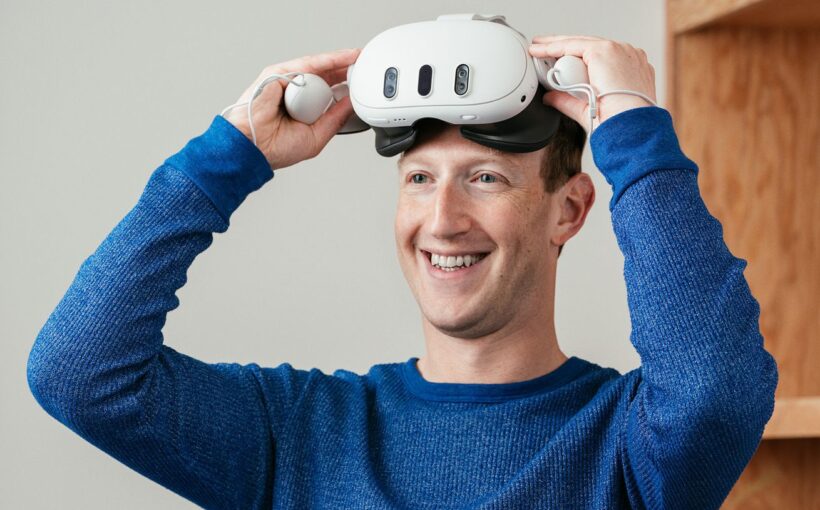
Mark Zuckerberg doesn’t seem phased by Apple’s introduction of the Vision Pro.
In a companywide meeting with Meta employees today that The Verge watched, the CEO said Apple’s device didn’t present any major breakthroughs in technology that Meta hadn’t “already explored” and that its vision for how people will use the device is “not the one that I want.” He also pointed to the fact that Meta’s upcoming Quest 3 headset will be much cheaper, at $499 compared to the Vision Pro’s $3,499 price tag, giving Meta the opening to reach a wider user base.
“I think that their announcement really showcases the difference in the values and the vision that our companies bring to this in a way that I think is really important,” Zuckerberg told employees, who were gathered at the company’s Menlo Park, California, headquarters for its first all-hands meeting since 2020. Zuckerberg said that the Quest is about “people interacting in new ways and feeling closer” while also “about being active and doing things.”
“By contrast, every demo that they showed was a person sitting on a couch by themself,” he said of Apple’s WWDC keynote earlier this week. “I mean, that could be the vision of the future of computing, but like, it’s not the one that I want.”
Zuckerberg may be breathing easy now, but Meta has certainly been on edge up until Apple’s announcement. It rushed out its Quest 3 announcement just days before, even though the device isn’t shipping until the fall. Meta has been trying to position itself as a leader in the virtual and augmented reality space for a long time and is plowing billions of dollars a year into the effort, causing concern among some investors. The introduction of Apple’s headset marks a major competitive threat.
Meta has found early success in VR gaming and fitness, but it’s struggled trying to reach the higher end and general computing market that Apple is going after, with last year’s Quest Pro largely being seen as a flop.
You can read Zuckerberg’s full remarks about Apple’s headset below:
Apple finally announced their headset, so I want to talk about that for a second. I was really curious to see what they were gonna ship. And obviously I haven’t seen it yet, so I’ll learn more as we get to play with it and see what happens and how people use it.
From what I’ve seen initially, I’d say the good news is that there’s no kind of magical solutions that they have to any of the constraints on laws and physics that our teams haven’t already explored and thought of. They went with a higher resolution display, and between that and all the technology they put in there to power it, it costs seven times more and now requires so much energy that now you need a battery and a wire attached to it to use it. They made that design trade-off and it might make sense for the cases that they’re going for.
But look, I think that their announcement really showcases the difference in the values and the vision that our companies bring to this in a way that I think is really important. We innovate to make sure that our products are as accessible and affordable to everyone as possible, and that is a core part of what we do. And we have sold tens of millions of Quests.
More importantly, our vision for the metaverse and presence is fundamentally social. It’s about people interacting in new ways and feeling closer in new ways. Our device is also about being active and doing things. By contrast, every demo that they showed was a person sitting on a couch by themself. I mean, that could be the vision of the future of computing, but like, it’s not the one that I want. There’s a real philosophical difference in terms of how we’re approaching this. And seeing what they put out there and how they’re going to compete just made me even more excited and in a lot of ways optimistic that what we’re doing matters and is going to succeed. But it’s going to be a fun journey.



